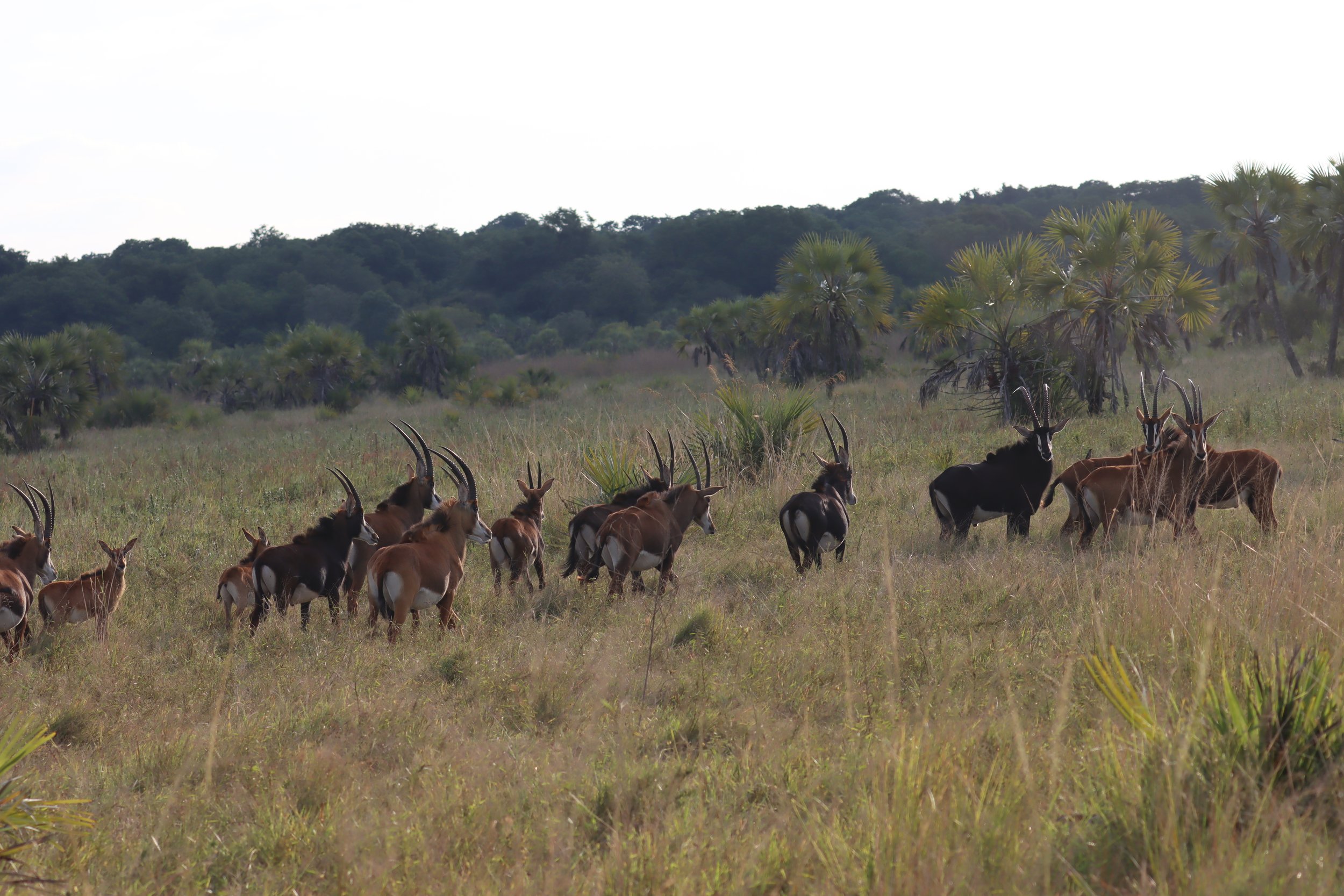A Sabbath Year: An Unexpected Consequence from COVID - Part 1
“For six years you shall sow your field, and for six years you shall prune your vineyard and gather in its fruits, but in the seventh year there shall be a Sabbath of solemn rest for the land, a Sabbath to the Lord.” Leviticus 25: 3,4
I sat in a semi-daze, not so much from the bourbon in my hand as from the day’s happenings. Hunters have dream animals, often these animals are trophies that seem out-of-reach whether because of finances or rarity. On the one hand, the trophy is available, but so costly that it might as well be extinct for the budget-limited hunter. On the other hand, there may be so few worthy trophy animals of the desired species that it is like winning the lottery to run across a shootable male. My befuddlement was due to having taken a dream animal that had both attributes. In the Zambeze Delta Safaris’ skinning shed across the airstrip from Mungari Camp, and the firepit at which I was sitting, skilled staff were preparing my trophy Sable antelope. Male and female Sable Antelopes carry scimitar-shaped horns, but the horns of a mature male sweep back in an arc that seems to just keep going until they reach his back. Old males are also as black as a classic tuxedo, wonderfully offset with snow white markings on face, rump, and belly.
I know of no one who denies the Sable Antelope a standing as one of the glamour species for trophy hunters. And, therein lies the rub for someone less-heeled. Sable Antelopes are decreasing in numbers across Africa, not from trophy hunting, but because of encroachment of humans and the associated habitat loss, with an estimated 51% of the species’ former range gone. Thanks to great management based on hunting funds, this is not true in Coutada 11. Incredibly, numbers of this wonderful animal have swollen to carrying capacity and beyond since Mark Haldane and colleagues took over the stewardship of Coutada 11. But this antelope is still highly-coveted by hunters, making it one of the costliest game species to hunt. Simply put, I never expected to be able to have the resources to pursue a beautiful, mature, coal-black, bull Sable. Fortunately, I was wrong, and now I possessed not only the fulfilment of the many-year’s dream, but also the memory of the hunt. I had something else as well. I had a marvelous example of one benefit of the catastrophic COVID pandemic. You see, Sable Antelopes in Coutada 11 are likely a mixture of two subspecies, the larger ‘Southern’ form, Hippotragus niger niger occupying territory south of the Zambeze River and the smaller in the horn, so-called ‘Eastern’ or ‘Roosevelt’ H. n. roosevelti that wanders through the woodlands north of the Zambeze. Though a significant barrier when running deep, during the dry season Sable Antelopes and all other species can pretty much cross the Zambeze riverbed without getting their feet wet. Such crossings could allow males and females of the two subspecies to meet and reproduce.
Mating between the larger and smaller forms might explain why the Sable Antelopes taken regularly by Mark Haldane’s clients are lovely, but relatively modest in horn length, with 38 inches being a very good size for this area. I really didn’t care about the length of horn carried by my trophy Sable bull. Thirty-six, 38, whatever, he was a wonderful animal that would help me relive a magical pursuit. I turned to my companion at the firepit, Zambeze Delta Safaris very own Mark Haldane and said “How can he be so large?! Do you guys take 42-inch Sable bulls regularly?” Later in the season, several hunters would bag even larger bulls with horns pushing 44-inches, unheard of for Mark’s concession. I asked again, “Why did I find such a large animal?” The outfitter took a sip of his Single malt and grinned, “The year off really helped the Sable Antelopes and everything else.” He was referring to the devastating, from a Safari business perspective, COVID-related shutdown of 2020. As a scientist, his statement made me wonder if we might be witnessing the effects from a Biblical-esque, ‘Sabbath Year’ for the game animals?
As I thought about Mark’s comment, I realized I had probably seen the effect from the closure of African countries due to COVID infections the year before. Traveling to Namibia to hunt for a leopard in the country’s Kaokoland region, the animal numbers had, according to my Professional Hunter, Kabous Grünschloss sky rocketed with few Safaris to remove the excess individuals. We had so many cats on bait trees we found it difficult to keep them fed. I wondered if I was witnessing a similar – but 12-month delayed – population expansion of trophy animals here in Mozambique’s Zambeze Delta? As a biologist, I understand that harvesting a certain class of animal – whether the smallest, largest, or in-between – will end up in selecting for the other classes. In the case of trophy hunters, we should only shoot the oldest males of whatever species we are after. If we shoot younger males that have the best antlers, horns, etc, before they leave the maximum babies behind, we are carrying out an evolutionary experiment whereby we favor, by not killing, the animals that are smaller in horn. That’s why ‘managed’ areas, such as ranches in West Texas that offer hunts for huge whitetail bucks will cull those males at a young age that will never be the largest, to keep them from leaving similarly-small male offspring behind. Because the law-of-the-land for ZDS is to have their clients take mature, older males, the prediction from my science-geeking is that Coutada 11 would be chock-a-block full of older animals and larger trophies in 2021, left behind from 2020’s lack of hunting…
Sable Bull with his herd

